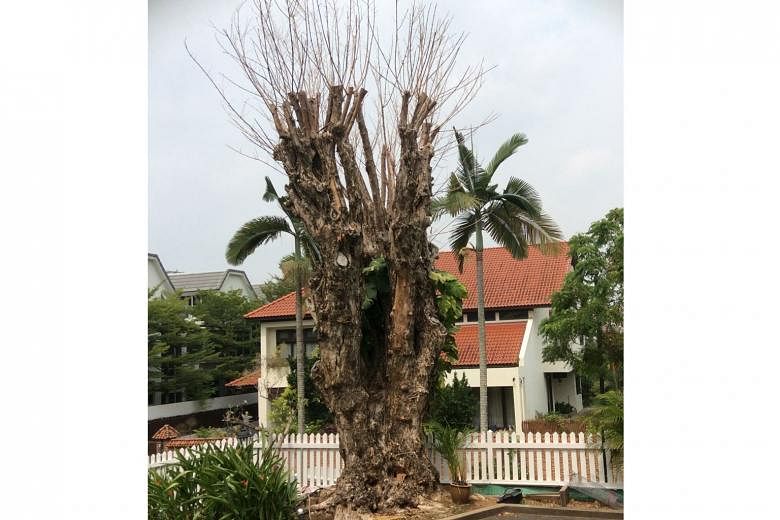Grow Island Lychee sapling in the ground
I was told this is a longan plant and I have been growing it in a pot for a few years. Can it be grown in the pot and will it bear edible fruit? It seems to have burnt leaves. What plant is this?
Richard Huang
The sapling is a tree known as the Island Lychee or Pacific Lychee. Its botanical name is Pometia pinnata and it belongs to the same plant family, Sapindaceae, as the longan.
The plant grows as a tree up to 50m tall and hence needs a large growing area.
It produces large edible fruit with a thick rind and its inside consists of a white translucent arid encapsulating a single seed.
The species is a native tree of Singapore and produces attractive new leaves that are red or orange. It is also widely planted in parks, gardens and the streetscape.
Your sapling is best planted in the ground outdoors and you should ensure that it has sufficient space to grow. Bearing in mind that the tree can grow quite big later on, do ensure that there is space for tree-pruning vehicles or equipment to reach the tree if such an operation is required.
The brown leaves on the plant could be caused by the limited root space in a pot where water and nutrients can be scarce.
Seek help from tree-care specialist
My old tree, which was topped more than a year ago, has stopped growing new branches. Those that grew initially were heavily attacked by insects. I was advised to leave them alone as they would fly away. There are now no more leaves or new shoots. How can I revive the tree?
Thong Soak Kwan
It is recommended you consult a certified arborist from a landscape company as the professional will perform an on-site, closer examination to assess the health and structural integrity of the tree.
Do note that topping is not a recommended practice to reduce the size of a tree as it leads to the formation of stubs or lateral branches that are not large enough for the tree to assume robust terminal growth.
The new growth that appears can be attacked by pests, which had occurred as mentioned.
The new growth also does not have a strong attachment to the tree and can break easily.
Curry leaf plant infested with sucking insect
My curry leaf plant has black spots on the underside of the leaves and I sometimes find the leaves to be sticky. I occasionally spray a dilute soap solution and prune heavily infested parts. What pest is this? Is there more I should do to prevent a re-infestation?
Aarati Govinda Rao
The black spots could be the immobile pupae of the sap-sucking pest, the citrus blackfly, which has been reported to be found on the curry leaf plant (botanical name: Bergera koenigii).
Sap-sucking pests produce sticky honeydew deposits that can accumulate on leaves and stems and this leads to the development of black sooty mould.
In a severe infestation, it is more cost-effective to prune and discard infested portions of the plant.
New growth can be protected from the pests with repeated applications of summer oil or neem oil, which suffocates the young and adults of the bug.
Check plants regularly and manage infestations as they appear to reduce their spread and severity.
• Answers by Dr Wilson Wong, an NParks-certified practising horticulturist and park manager. He is the founder of Green Culture Singapore and an adjunct assistant professor (Food Science & Technology) at the National University of Singapore.
• Have a gardening query? E-mail it with clear, high-resolution pictures of at least 1MB, if any, and your full name to stlife@sph.com.sg. We reserve the right to edit and reject questions.



